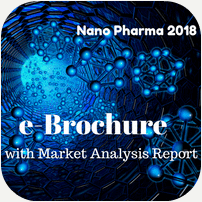Manal M Kamel
Immunology Theodor Bilharz Research Institute, Egypt
Title: Three-dimensional hepatocyte differentiated MSCs vs. 2D cell culture in induction of hepatic regeneration in an experimental model
Biography
Biography: Manal M Kamel
Abstract
MSCs were generated and propagated from umbilical cord blood (UCB) and characterized by immunophenotyping using flow cytometry. Hepatogenic differentiation was induced on 2D and 3D (nanofiber scaffold) culture system. Gene expression analysis was done by real-time PCR. Human albumin and α-1 antitrypsin (AAT) in cell culture supernatants was performed by ELISA. Differentiated cells were administered intravenously into a murine model of CCL4 induced liver cirrhosis. Animal models were divided into three groups, a) Pathological control, b) CCL4 treated with hepatogenic differentiated MSCs on 2D vessels, c) CCL4 treated with hepatogenic differentiated MSCs cultured on nanofiber scaffold (3D). Liver pathology was examined 12 weeks after treatment with cells. The hepatogenic differentiated MSCs stained positively with more abundant and mature cells with hexagonal shape and central nuclei forming large sheets in 3D than 2D at day 28. By scanning electron microscopy hepatogenic differentiated cells showed strong adherence and penetration onto the surfaces of the nanofibrous scaffolds. (AAT) secretion and indocyanine green uptake on day 21 was significantly increased in 3D rather than 2D. In experimental model, MSC-3D scaffold group stained with Sirius red and Masson Trichrome exhibited maximal restoration of liver architecture with absent septal fibrosis. In contrast, hepatic fibrosis decreased to a lesser extent in MSC-2D group. Liver function tests revealed marked improvement of ALT, AST in 3D treated group. Both 3D and 2D culture system are effective in functional hepatogenic differentiation and serve as a suitable vehicle in liver tissue engineering. In vivo hepatogenic differentiation is more effective on 3D nanofibrous scaffold, with better functional recovery.

